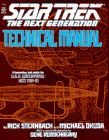|
When systems are changed it is not usually done by
the same people who originally designed and created it.
In order to change
a system, a person would need to know exactly how it works...hence the
need for good documentation.
A lack of understanding may lead to a new
system which has errors or to a system which is not effective.
(It is estimated that 90% of programmers are
involved in changing existing software rather than creating new programs)
Documentation of a system
will include :
| 1 |
Technical
Manual

...written
in language that only computer experts can understand.
|
systems
specifications
- description of systems
- data flow diagrams (or similar)
algorithm (program)
specifications
- algorithm flowcharts (or pseudocode)
- program listing
- lists of variables used
(most programs are self-documenting; comments are added to the
listing explaining the steps used in the program. Meaningful
variable names are also used.)
- data dictionary (structure of databases)
Technical documentation is developed continuously throughout the
design and development of a new system.
With good technical documentation an analyst/programmer should be
able to create the system from scratch.
|
| 2 |
User Manual
(Operating Instructions)

...written in
simple
language for people who may not be computer experts.
|
- software installation
procedures
- details for starting
the program.
- details for setting security
(passwords etc)
- details of discs/tapes required.
- clerical procedures
- data preparation
(batching / hash totals etc)
- how to enter data (which fields; codes used; how to enter dates
etc)
- details and samples of reports
which may be printed.
- backup procedures
to be followed.
- recovery
procedures in the event of hardware failure.User documentation
is created after the new system has been developed.
|
|



